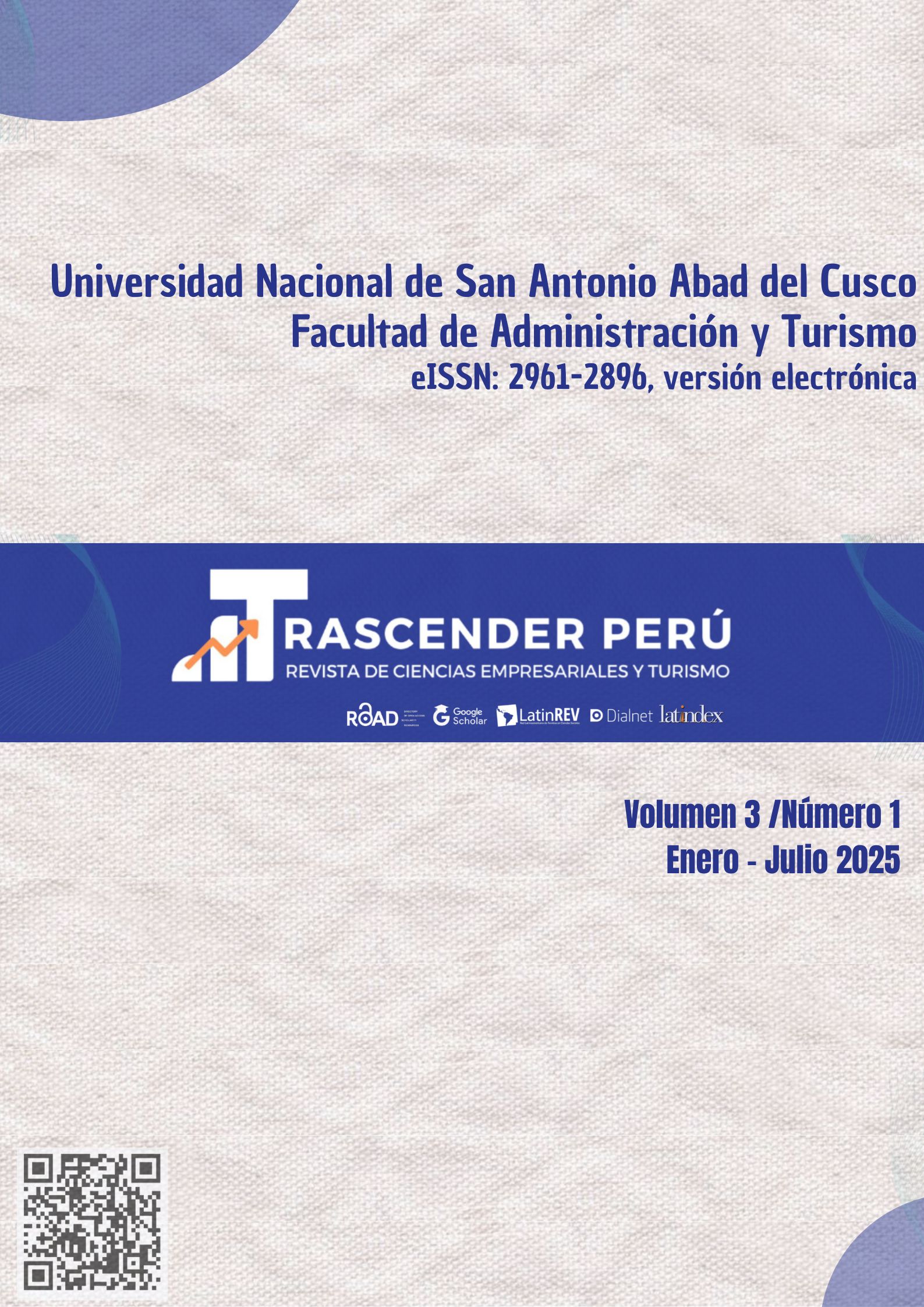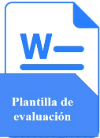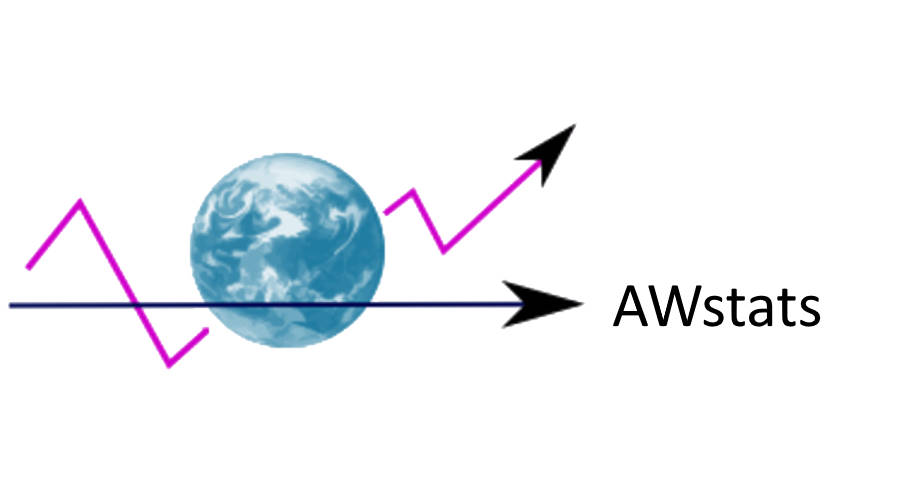Felicidad en el trabajo: Un análisis comparativo entre empleados del sector público y privado
DOI:
https://doi.org/10.51343/revtrascender.v3i1.1786Palabras clave:
felicidad en el trabajo, sector público, sector privado, estabilidad laboral, satisfacción laboral, bienestar emocionalResumen
Este estudio analiza la felicidad en el trabajo desde una perspectiva comparativa entre empleados del sector público y privado en la ciudad de Quito. El objetivo principal fue identificar diferencias significativas en
dimensiones clave como la estabilidad laboral, el bienestar emocional, el equilibrio vida-trabajo y la satisfacción con la remuneración. Se utilizó un enfoque cuantitativo con diseño no experimental, aplicando
análisis de varianza (ANOVA) y pruebas post hoc (Tukey y Hochberg) sobre una muestra de 578 participantes. Los resultados muestran que los empleados del sector público reportan mayores niveles de estabilidad y satisfacción salarial, mientras que otras dimensiones como el disfrute del trabajo y el equilibrio personal no presentan diferencias significativas entre sectores. Estos hallazgos sugieren la coexistencia de factores universales e intrínsecos que influyen en la felicidad laboral. Se concluye que tanto el sector público como el privado deben implementar estrategias que fortalezcan el bienestar emocional y organizacional de sus
colaboradores.
Descargas
Citas
Aristóteles. (350 A.C./2014). Ética a Nicómaco. San José: Edin Editorial Digital Imprenta Nacional.
Avey, J. B., Wernsing, T. S., & Luthans, F. (2009). Can positive employees help positive organizational change? Impact of psychological capital and emotions on relevant attitudes and behaviors. The Journal of Applied Behavioral Science, 48-70.
Ballesta, A. M. (2004). Una introducción a la Felicidad y a la Historia de la Filosofía. EL CATOBLEPAS, 31, 17.
Baptiste, N. (2008). Tightening the link between employee wellbeing at work and performance A new dimension for HRM. Management Decision, 384-309.
Castro, A., & Díaz, P. (2020). Comunicación interna y gestión de bienestar y felicidad en la empresa española. Profesional de la información, 1-13.
Cropanzano, R., & Wright, T. (2001). When a "Happy" Worker Is Really a "Productive" Worker: A Review and Further Refinement of the Happy-Productive Worker Thesis. Consulting Psychology Journal: Practice and Research, 182-199.
Dechev, Z. (2010). Effective Performance Appraisal – a study into the relation between employer satisfaction and optimizing business results. Erasmus Unversity Rotterdam.
Deng, Q.Liu, Y.Cheng, Z. Yang, J. Liu, Y. (2024). Global job satisfaction and fluctuation among community general practitioners: A systematic review and meta-analysis. BMC Health Services Research, 24. doi:https://doi.org/10.1186/s12913-024-10830-6
Díaz, F., & Carrasco, M. (2018). Efectos del clima organizacional y los riesgos psicosociales sobre la felicidad. Contaduría y Administración, 1-14.
Diener, E. (1984). Subjective well-being. Psychological Bulletin, 542–575. doi:https://doi.org/10.1037/0033-2909.95.3.542
Erazo, P., & Riaño, M. (2021). Felicidad en el trabajo en docentes oficiales de básica y media. Revista Boletín Redipe, 349-371.
Federico, O., Díaz, F., & Carrasco, M. (2024). Job climate and job satisfaction as predictors of happiness at work in a sample of Mexican health care employees. Contaduría y Administración, 231-253.
Fisher, C. (2003). Why do lay people believe that satisfaction and performance are correlated? Possible sources of a commonsense theory . Journal of Organizational Behavior, 753-777.
Fisher, C. (2010). Happiness at work. International Journal of Management Reviews, 384-412.
Foncubierta, M., & Sánchez, J. (2019). Hacia la felicidad laboral: atender motivaciones y eliminar «temores digitales». Revista de Ciencias de la Administración y Economía, 239-257.
Freud, S. (1930). El malestar en la cultura. Madrid: Alianza editorial.
Gabini, S. (2018). Adaptación y validación de un instrumento para medir felicidad en el trabajo. Revista Interamericana de Psicología Ocupacional, 35-45.
García, R., Muñoz, P., Pineda, L., & Rodríguez, J. (2022). Social exchange approach and happiness at work: exploring the mediating effect of organizational commitment. OBETS. Revista de Ciencias Sociales, 221-236.
Greenhaus, J. H., & Powell, G. N. (2006). When work and family are allies: A theory of work-family enrichment. Academy of Management Review, 72-92.
Guillén, C., & Dutschke, G. (2020). Factors contributing to organizational happiness: content, exploratory and confirmatory factorial analysis. European Journal of International Management, 376-406.
Hendriks, M., & Birnberg, R. (2024). Happiness in the Daily Socio-Cultural Integration Process: A day Reconstruction Study among American Immigrants in Germany. International Migration Review, 610-643.
Jiang, L., & Probst, T. M. (2014). Organizational communication and the psychological well-being of employees in low‐wage service jobs: The mediating role of the employee's attitude towards work. Journal of Occupational Health Psychology, 482-493.
Jiménez, D., Ortiz, M., Monsalve, M., & Melchor, G. (2020). "Felicidad" asociada al bienestar laboral: categorización de variables. Revista Venezolana de Gerencia, 462-476.
Judge, T. A., & Piccolo, R. F. (2004). Transformational and transactional leadership: A meta-analytic test of their relative validity. Journal of Applied Psychology, 755-768.
Judge, T., Thoresen, C., Bono, J., & Patton, G. (2001). The Job Satisfaction-Job Performance Relationship: a Qualitative and Quantitative Review. Psychological Bulletin, 376-407.
Kahn, W. A. (1990). Psychological conditions of personal engagement and disengagement at work. Academy of Management Journal, 692-724.
Laffaldano, M., & Muchinsky, P. (1985). Job Satisfaction and Job Performance: A Meta-Analysis. Psychological Bulletin, 251-273.
López, C., Vieira, J., & Echeverri, A. (2023). Leadership and its Influence on Happiness at Work: A Narrative Literature Review. Cuadernos de Administración, 1-11.
Luthans, F., Avolio, B., Avey, J., & Norman, S. (2007). Positive psychological capital: Measurement and relationship with performance and satisfaction. Personnel Psychology, 541-572.
Maslow, A. (1943). A theory of human motivation. Psychological Review, 370-396.
Meyer, J. P. (2002). Affective, continuance and normative commitment to the organization: A meta-analysis of antecedents, correlates, and consequences. Journal of Vocational Behavior, 20-52.
Meyer, J., & Allen, N. (1997). Commitment in the workplace: Theory, Research, and Application. SAGE Publications, Inc. doi:https://doi.org/10.4135/9781452231556
Moccia, S. (2016). Felicidad en el trabajo. Papeles del Psicólogo, 143-151.
Moorman, R. H. (1993). The influence of cognitive and affective based job satisfaction measures on the relationship between satisfaction and organizational citizenship behavior. Human Relations, 759–776.
Organ, D. (1988). Organizational Citizenship Behavior: The Good Soldier Syndrome. Lexington : Lexington Books.
Pablo, F., Budhwar, P., & Bamel, U. (2019). Vincular resiliencia y compromiso organizacional: ¿importa la felicidad? Revista de eficacia organizacional: personas y desempeño, 21-37.
Parker, S. K., Williams, H. M., & Turner, N. (2003). Modeling the antecedents of proactive behavior at work. Journal of Applied Psychology, 615-622.
Porras, N., & Parra, L. (2019). La felicidad en el trabajo: entre el placer y el sentido. Equidad y Desarrollo, 181-197.
Ravina, R., Díaz, G., Ahumada, E., & Galván, E. (2024). Emotional wage, happiness at work and organisational justice as triggers for happiness management. Journal of Management Development Emerald, 236-252.
Salas, A., & Alegre, J. (2018). Happiness at work: Developing a shorter measure. Journal of Management & Organization, 1-21.
Salas, A., & Elvira, J. (2022). New Clues for Improving Quality of Working Life: How Personal Job Resources Foster of Happiness at Work. UCJC Bussiness and Society Review, 88-103.
Salas, A., Alegre, J., & Fernández, R. (2018). Happiness at work in knowledge-intensive contexts: Opening the research agenda. European Research on Management and Business Economics, 1-11.
Salas, A., López, Á., Alegre, J., & Fernández, R. (2017). On the road to happiness at work (HAW): transformational leadership and organizational learning capability as drivers of HAW in a healthcare context. Personnel Review, 314-338.
Sánchez, J., Neira, P., & Véliz, J. (2023). Happiness at work. Revista Venezolana de Gerencia, 1361-1380.
Sánchez, J., Sánchez, R., & Jimbo, J. (2019). Happiness Management: Revisión de la literatura científica en el marco de la felicidad en el trabajo. Retos Revista de Ciencias de la Administración y Economía, 259-271.
Sanín, A., Salanova, M., & Vera, P. (2019). Satisfacción con la Vida: El rol de la Felicidad en el Trabajo y la Vida. Revista Interamericana de Psicología Ocupacional, 54-66.
Schaufeli, W. B., & Bakker, A. B. (2004). Job demands, job resources, and their relationship with burnout and engagement. Journal of Organizational Behavior, 293–315.
Schaufeli, W., De-Witte, H., & Desart, S. (2023). Sustainable employability and work engagement: A three-wave study. Frontiers in Psychology, 14. doi:https://doi.org/10.3389/fpsyg.2023.1188728
Seligman, M. (2002). Authentic Happiness: Using the New Positive Psychology to Realize Your Potential for Lasting Fulfillment. New York: Free Press.
Sender, G., Carvalho, F., & Guedes, G. (2021). The Happy Level: A New Approach to Measure Happiness at Work Using Mixed Methods. International Journal of Qualitative Methods, 1-17.
Turban, D. B., & Greening, D. W. (1997). Corporate social performance and organizational attractiveness to prospective employees. Academy of Management Journal, 658-672.
Varca, P., & James, M. (1993). The Relationship of Ability and Satisfaction to Job Performance. Applied Psychology: An International Review, 265-275.
Waal, A. d. (2018). Increasing organisational attractiveness: The role of the HPO and happiness at work frameworks. Journal of Organizational Effectiveness: People and Performance. doi:https://doi.org/10.1108/JOEPP-10-2017-0080
Warr, P. (2007). Work, happiness, and unhappiness. Nueva York: Prensa de psicología.
Warr, P. (2013). Sources of happiness and unhappiness in the workplace: A combined perspective. Journal of Work and Organizational Psychology, 99-106.
Weiss, H. M., & Cropanzano, R. (1996). Affective events theory: A theoretical discussion of the structure, causes and consequences of affective experiences at work. Research in Organizational Behavior, 1–74.
Wong, C.-S., & Law, K. (2002). The effects of leader and follower emotional intelligence on performance and attitude: An exploratory study. The Leadership Quarterly, 243-274.
Youssef, C. M., & Luthans, F. (2007). Positive organizational behavior in the workplace: The impact of hope, optimism, and resilience. Journal of Management, 774-800.
Zare, R. (2016). Felicidad en el trabajo y desempeño laboral en un Centro de capacitación industrial de la ciudad de Trujillo (Perú), año 2016. Revista Ex Cathedra en negocios, 77-91.
Zeidner, M., Matthews, G., & Roberts, R. D. (2004). Emotional intelligence in the workplace: A critical review. Applied Psychology, 371-399.
Descargas
Publicado
Cómo citar
Número
Sección
Licencia
Derechos de autor 2025 Alexis Raul Garzón Paredes, José Gabriel Gangotena Flores, Maritza Catalina Abarca Achig

Esta obra está bajo una licencia internacional Creative Commons Atribución 4.0.
Derechos de autor TRASCENDER PERÚ
Esta obra está bajo la licencia Creative Commons Reconocimiento CCBY 4.0 Internacional
Usted es libre de:
- Compartir: Copiar y redistribuir el material en cualquier medio o formato para cualquier propósito, incluso comercialmente.
- Adaptar: Remezclar, transformar y construir a partir del material para cualquier propósito, incluso comercialmente.


.png)









1.jpg)
.jpg)
.jpg)
.jpg)


